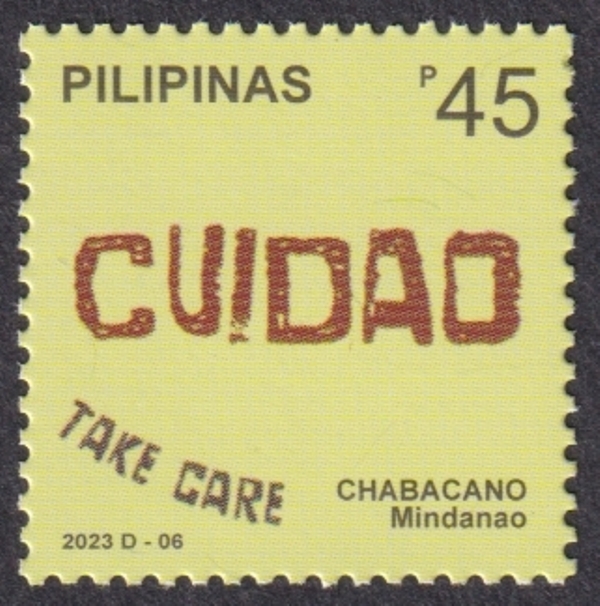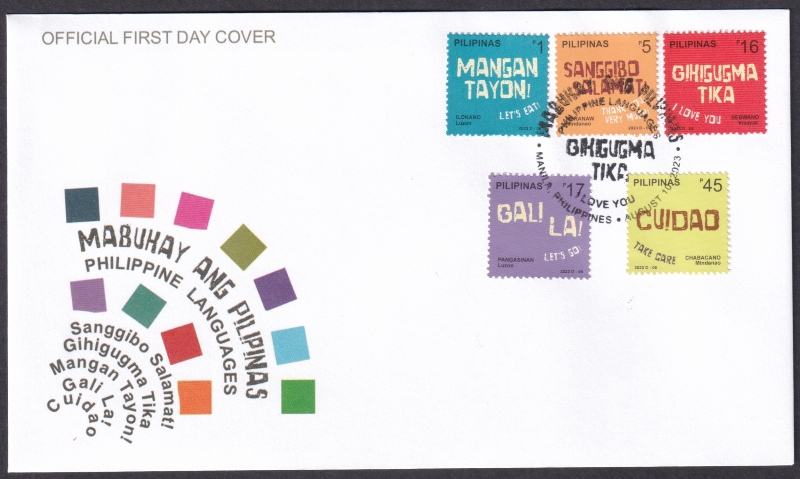2023, August 10. Philippine Languages - Series 1
Litho Offset, Amstar Printing Company, Inc., Perf 14
Singles, Sheets of 100
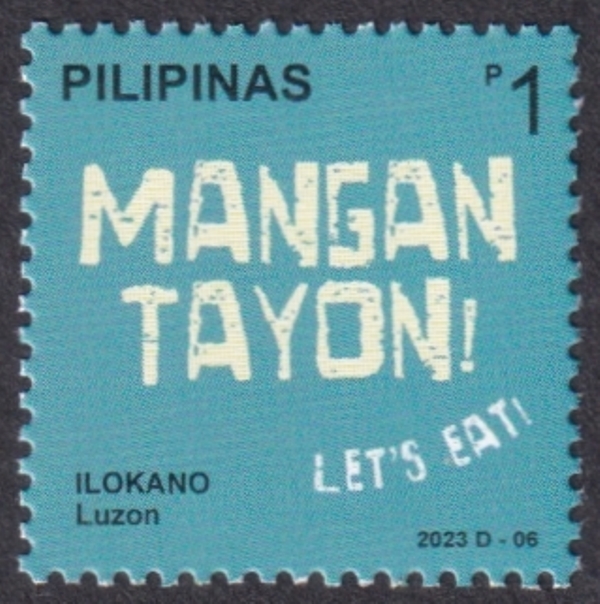
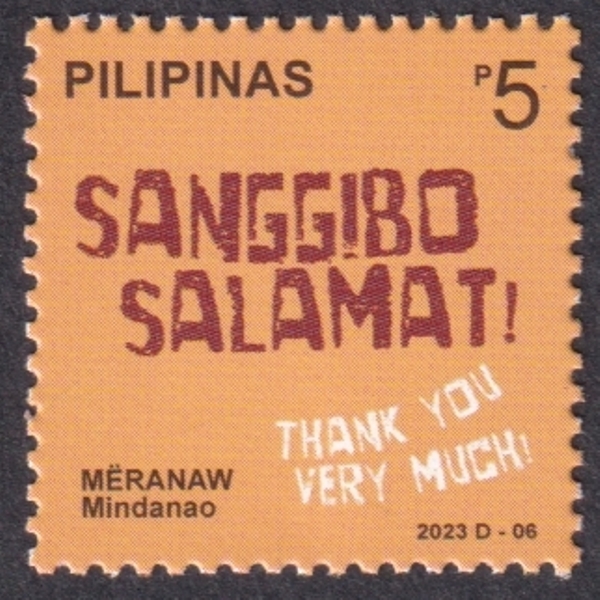
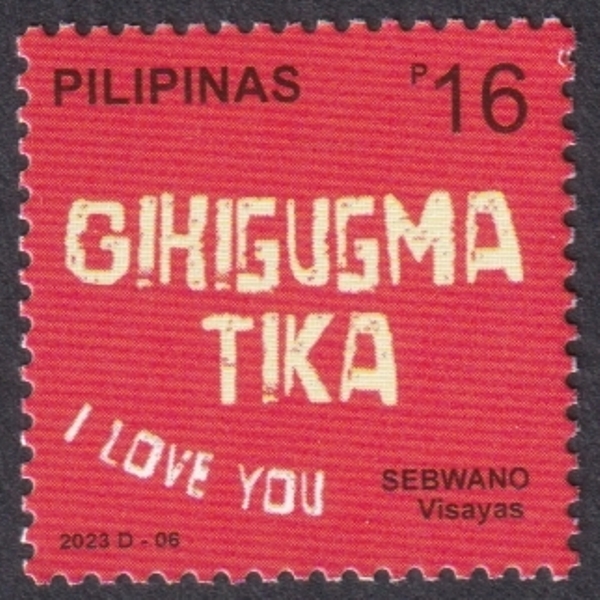
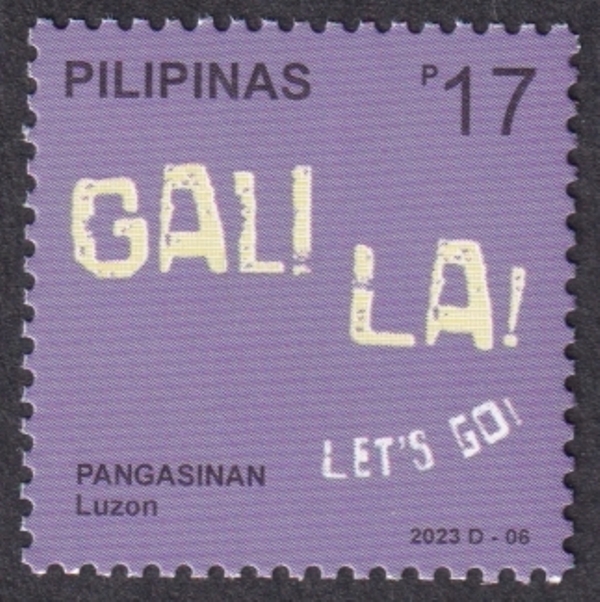
1p - Mangan Tayon! (Let’s Eat!) – Ilokano, Luzon (4,000,000)
5p - Sanggibo Salamat! (Thank you very much!) – Meranaw, Mindanao (4,000,000)
16p - Gihigugma Tika (I Love You) – Sebwano, Visayas (3,000,000)
17p - Gali La! (Let’s Go!) – Pangasinan, Luzon (2,500,000)
45p - Cuidao (Take Care) – Chabacano, Mindanao (2,000,000)
First Day Covers: Manila
Philippine Languages
The Commission on the Filipino Language (CFL), also referred to as the Komisyon sa Wikang Filipino (KWF), is the official regulating body of the Filipino language and the official government institution tasked with developing, preserving, and promoting the various local Philippine languages. The commission was established in accordance with the 1987 Constitution of the Philippines.
There are some 130 to 195 languages spoken in the Philippines, depending on the method of classification. Almost all are Malayo-Polynesian languages native to the archipelago. A number of Spanish-influenced creole varieties generally called Chavacano along with some local varieties of Chinese are also spoken in certain communities. The 1987 constitution designates Filipino, a standardized version of Tagalog, as the national language and an official language along with English. Filipino is regulated by Commission on the Filipino Language and serves as a lingua franca used by Filipinos of various ethnolinguistic backgrounds. (Wikipedia)
Ilokano - is an Austronesian language (a language family widely spoken throughout Maritime Southeast Asia) spoken in the Philippines, primarily by Ilocano people and as a lingua franca (a language systematically used to make communication possible between groups of people who do not share a native language or dialect) by the Igorot people and also by the native settlers of Cagayan Valley. It is the third most-spoken native language of the Philippines.
Meranaw (Maranao) - is an Austronesian language spoken by the Maranao people in the provinces of Lanao del Sur and Lanao del Norte and the cities of Marawi and Iligan City. There are thought to be between 800,000 and a million speakers. Maranao belongs to the Southern Philippine branch of Malayo-Polynesian languages and is closely related to Ilanun and Maguindanaon, which are also spoken in Sabah in Malaysia.
Sebwano (Cebuano) - is an Austronesian language spoken in the southern Philippines. Informally called by its generic term Bisayâ translated into English as Visayan. It is spoken by the Visayan native to the islands of Cebu, Bohol, Siquijor, the eastern half of Negros, the western half of Leyte, and the northern coastal areas of Northern Mindanao and the Zamboanga Peninsula. The Commission on the Filipino Language, spells the name of the language in Filipino as Sebwano.
Pangasinan - is an Austronesian language, and one of the eight major languages of the Philippines. It is the primary and predominant language of the entire province of Pangasinan and northern Tarlac, on the northern part of Luzon's central plains geographic region, most of whom belong to the Pangasinan ethnic group. It is also spoken in southwestern La Union, as well as in the municipalities of Benguet, Nueva Vizcaya, Nueva Ecija, and Zambales that border Pangasinan.
Chabacano (Chavacano) - is a group of Spanish-based creole language varieties spoken in the Philippines. The variety spoken in Zamboanga City, Mindanao, has the highest concentration of speakers. Other currently existing varieties are found in Cavite City and Ternate, located in the Cavite province, Luzon. Chabacano is the only Spanish-based creole in Asia.
